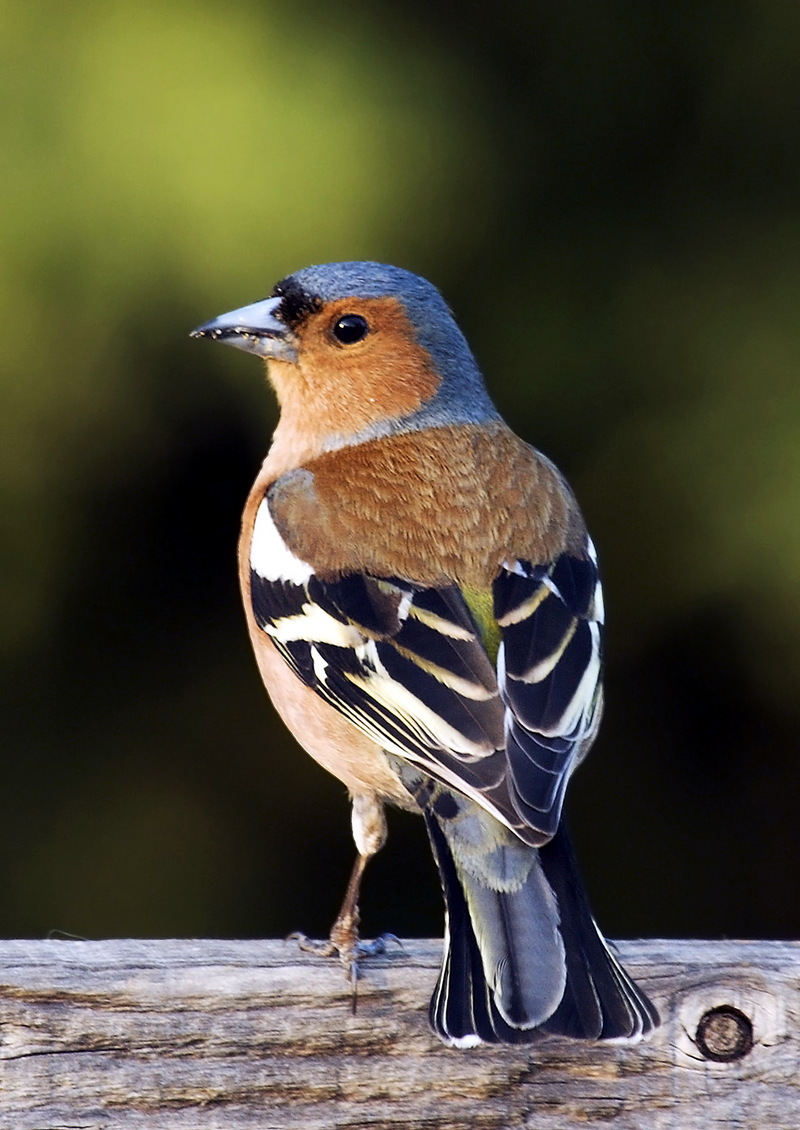Chaffinch
From Wikipedia, the free encyclopedia
[Photo] English: Male chaffinch (Fringilla coelebs). Fran??ais : Pinson des arbres (Fringilla coelebs) m??le. Date 21 April 2007. Author Michael Maggs http://commons.wikimedia.org/wiki/User:MichaelMaggs
The Chaffinch, (Fringilla coelebs), is a small passerine bird in the finch family Fringillidae, also called a spink. Its large double white wing bars, white tail edges and greenish rump easily identify this 14-16 cm long species. The breeding male is unmistakable, with his reddish underparts and a blue-grey cap. The female is drabber and greener, but still obvious.
This bird is widespread and very familiar throughout Europe. It is the most common finch in western Europe. Its range extends into western Asia, northwestern Africa, the Canary Islands and Madeira. On Tenerife and Gran Canaria, it coexists with its sister species, the endemic Blue Chaffinch.
Behaviour
It uses a range of habitats, but open woodland is favoured, although it is common in gardens and on farmland. It builds its nest in a tree fork, and decorates the exterior with moss or lichen to make it less conspicuous. It lays about six eggs.
This bird is not migratory in the milder parts of its range, but vacates the colder regions in winter. The coelebs part of its name means "bachelor". This species was named by Linnaeus; in his home country of Sweden, where the females depart in winter, but the males often remain. This species forms loose flocks outside the breeding season, sometimes mixed with Bramblings. This bird occasionally strays to eastern North America, although some sightings may be escapees.
The food of the Chaffinch is seeds, but unlike most finches, the young are fed extensively on insects.
The powerful song is very well known, and its fink or vink sounding call gives the finch family its English name. Males typically sing two or three different song types, and there are regional dialects too.
The acquisition by the young Chaffinch of its song was the subject of an influential study by British ethologist William Thorpe. Thorpe determined that if the Chaffinch is not exposed to the adult male's song during a certain critical period after hatching, it will never properly learn the song.1 He also found that in adult Chaffinches, castration eliminates song, but injection of testosterone induces such birds to sing even in November, when they are normally silent (Thorpe 1958).
Subspecies
Distinctive subspecies include
F. c. madeirensis, Madeira
F. c. africana, North Africa
F. c. tintillon, Canary Islands
In captivity
The chaffinch is a popular pet bird in many countries. In Belgium, the ancient traditional sport of vinkenzetting pits male chaffinches against one another in a contest for the most bird calls in an hour.
http://en.wikipedia.org/wiki/Chaffinch
| The text in this page is based on the copyrighted Wikipedia article shown in above URL. It is used under the GNU Free Documentation License. You may redistribute it, verbatim or modified, providing that you comply with the terms of the GFDL. |
|

